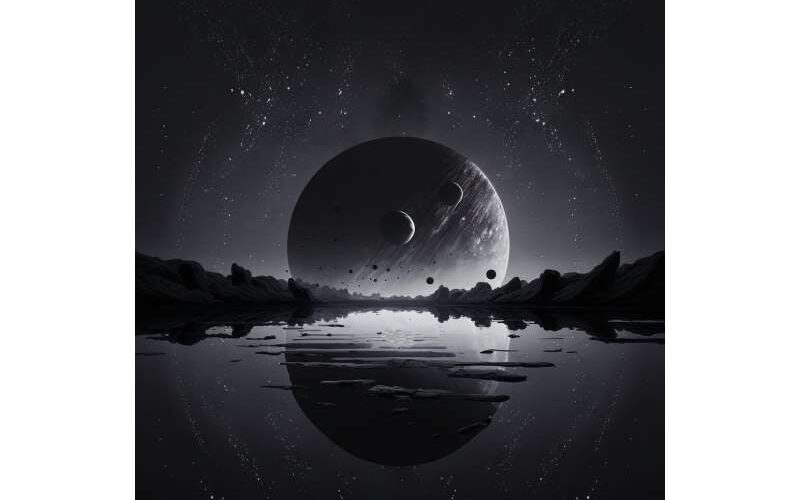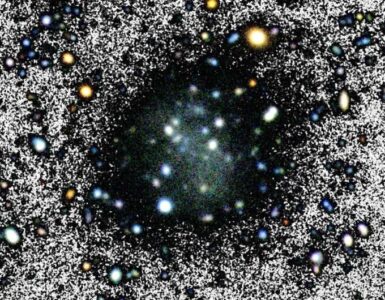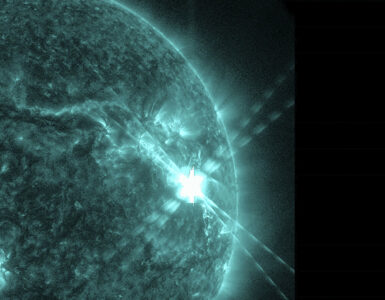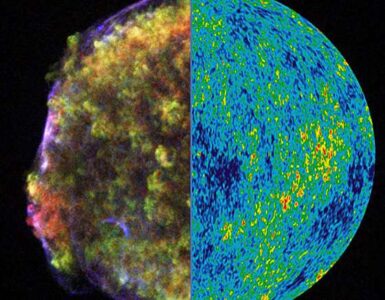Liquid water is one of the most important ingredients for the emergence of life as we know it on Earth. Researchers of the ORIGINS Cluster from the fields of astrophysics, astrochemistry and biochemistry have now determined in a novel, interdisciplinary collaboration the necessary properties that allow moons around free-floating planets to retain liquid water for a sufficiently long time and thus enable life.
The study is published in the International Journal of Astrobiology.
For the emergence of life on Earth, liquid water was a crucial component. Since only one planet is known so far to have given rise to life, the scientists assume that also elsewhere the presence of liquid water plays a pivotal role in the chemical evolution that can lead to the emergence of life.
In and outside our solar system, the habitable zone defines an annular region around the central star in which planets are neither too hot nor too cold for liquid water. Moons can also be habitable—even if they belong to planets beyond the habitable zone. In that case, however, they must have a heat source other than stellar heat, such as changing tidal forces. Indeed, Saturn’s moon Enceladus has an ocean of liquid water hidden beneath its ice crust thanks to tidal heating.
Moons around free-floating planets can be habitable
The discovery of dozens of free-flying planets (FFPs) in our galaxy has changed our understanding of the early evolution of planetary systems and theories of planet formation. These lonely wanderers were probably ejected from their planetary systems by dynamic instabilities and thus no longer have a parent star. However, if they have moons in tight orbits, they can gravitationally bind them. This works best for Jupiter-like planets with Earth-sized moons. In this way, new, unexpected places emerge where life could form.
In a previous study of liquid water on moons of starless planets, researchers from the ORIGINS cluster demonstrated that Earth-sized moons around Jupiter-like planets may indeed have liquid water. Their results suggested that the amount of water possible on the lunar surfaces is only a fraction of the total volume of all terrestrial oceans, which is still a hundred times the water content of Earth’s atmosphere. This amount is already enough to enable the chemical processes that can lead to life. Local wet-dry cycles (evaporation and condensation), as recently shown in a study of the first stages in the evolution by ORIGINS scientists, provide the necessary chemical complexity that could promote the accumulation of molecules and the polymerization of RNA.
Astrophysics meets biochemistry
The orbit of exomoons around FFPs becomes less eccentric and thus more circular over time. This reduces the tidal forces and thus the heating efficiency. In a unique collaboration, Ph.D. student Giulia Roccetti (ESO, previously a Master’s student at LMU), under the guidance of ORIGINS scientists, Prof. Barbara Ercolano (LMU, Astrophysics), Dr. Karan Molaverdikhani (LMU), Dr. Tommaso Grassi (MPE, Astrochemistry) and Prof. Dieter Braun (LMU, Biochemistry), developed a new, realistic model that can calculate the evolution of lunar orbits over long timescales. These are timescales of several billion years, as required for the evolution of life.
“In this way,” Giulia Roccetti explains, “we found that exomoons with small orbital radii not only have the best chance of surviving their planet’s ejection from its planetary system, but also remain eccentric for the longest period of time and thus can optimally produce tidal heat.” In addition, dense atmospheres favor the preservation of liquid water. In summary, Earth-sized moons with Venus-like atmospheres in close orbits around their orphan planets are interesting new candidates for habitable worlds.
Read more at Phys.org









